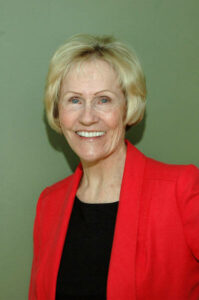Retired educator sees first-hand the harm of virtual learning
Fall this year brought with it many school challenges due to the COVID-19 pandemic. Many schools still have not returned to a normal routine. They are relying heavily on virtual learning which has severe limitations, especially for those with special learning needs.
Some districts, out of an overabundance of caution, moved to remote learning and students were faced with a number of new challenges. This decision proved to be extremely difficult for ESL students – those for whom English is a second language and others with learning challenges.
Helen Ikerd Johnson has both personal and professional experience with ESL. She retired after 35 years in the profession and she has a granddaughter from Thailand who does not speak English. Johnson has witnessed first-hand how difficult adapting to the new remote learning experience has been for her granddaughter.

Johnson, who lives in Lee’s Summit, Mo., holds a Master of Education degree in Behavioral and Emotional Disorders, and an Education Specialist degree in Elementary Administration. She has substantial experience with English as a second language and co-authored, with Dr. Rebekkah Stuteville of Park University, a study on citizenship education in the United States. They presented the study to the International Association of Schools and Institutes of Administration conference in Paris, France in 2015. Her vast experience is outlined in her book Up Hill Both Ways, the Truths, Lies and Tall Tales We Tell About School, which was released in March, 2019.
Johnson shared with Metro Voice how she and her family dealt with the challenges of remote learning. It’s a scenario shared by tens of millions of parents across the nation.
“It is difficult to project outcomes or give advice to teachers on how to best serve students in a situation that is unprecedented in recent memory,” Johnson told Metro Voice. But she knows that while many students are struggling with distance learning, it is particularly hard for ESL kids.
She says she primarily taught English in Detroit, Southwest Missouri with a high immigrant population, and Kansas City. Many of her students spoke a language other than English. “In those classes, I presented the students with exercises in reading instruction and how to use the language. In my opinion, word calling (simply correctly pronouncing the word, yet not understanding what it means or what you are saying) and using that word or phrase is a useless exercise to the non-English speaking student,” stated Johnson.
Those techniques that both classroom teachers and the ESL teachers were using are referred to as early-reading instructional strategies. In these instances, the students not only read and pronounce the words but discuss the words and how they are used in the story. A teacher might even give a presentation using the words. These language learning approaches are what Johnson believes would better assist a non-English speaking student. She says these are the appropriate techniques that teachers use in foreign language classes such as Spanish, German, French, or Mandarin.
During her granddaughter’s rather brief face-to-face school experience in the U.S. last spring, (and her knowing no English); she learned some English words and phrases. “Her ESL teacher developed a very supportive relationship with her, provided her with direct one-on-one instruction and kept her engaged with the materials presented,” Johnson states. But most importantly, perhaps, the teacher gave her immediate feedback.
Once the COVID-19 pandemic hit and the change to remote learning ensued, Johnson says there was a distinct difference in her granddaughter’s growth in learning English, and its effect on her abilities to retain material in her studies.
READ: Covid lockdowns and the mental health of kids
“When the school year turned to all remote learning, most of the ESL teacher’s effectiveness was lost due to the lack of direct human contact,” she says. “My granddaughter understood little of what the teacher was talking about, although she tried to remain attentive.”
Johnson says that one saving grace was the ‘forced’ parental participation that the change to remote learning required. “My granddaughter’s English usage improved dramatically when mom and dad became the primary instructors for all the take-home assignments they picked up and returned to the school each Friday,” she says. “Mistakes in her words and phrases were no longer simply ‘overlooked’ but rather corrected immediately when mom and dad were in charge.”
Johnson believes that the differences in teaching in-person versus remote broke down into three different aspects that teachers were challenged with addressing: developing and maintain a positive, constructive relationship with their students; keeping their students engaged; and lastly, providing immediate feedback to the students concerning their work.
“I believe the most important challenge for elementary teachers to overcome in a remote learning situation is developing those positive, constructive relationships with their students,” Johnson insists.
Young children attain new academic skills because they have a great thirst for knowledge, she shares. They work hard and try to learn because they want to please their teachers, instructors who are providing them with opportunities, materials, and supporting them in their learning process.
“They want to be part of their class peer group. This is the beginning of childhood education. Using only a remote form of learning will be the end of childhood education as we’ve come to know it,” Johnson states.
This lack of human contact and connection was not lost upon the teachers and they realized it was affecting their students and their abilities. The world had front-row seat via media reports, on attempts to help bridge this gap in establishing positive, constructive relationships with the students.
The one activity that seemed most effective in maintaining established relationships during the last school year was teachers actually visiting their students.
Johnson shared how some teachers even organized walking and auto parades through their students’ neighborhoods and delivered donated school supplies.
“I think that seeing a real person occasionally, not some TV-type image on the computer, was very important to young children,” she says. “That is one advantage the hybrid model has over the wholly remote model. Students do not care how much you know, until they know how much you care.”
–Amy Buster | Metro Voice








